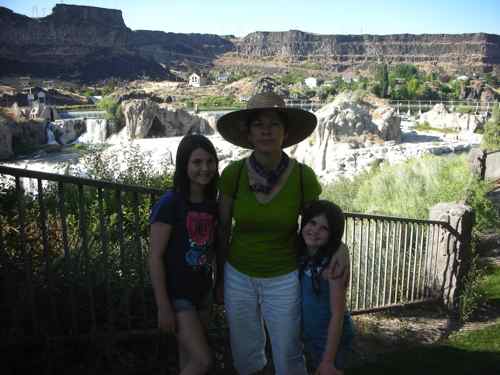 by Ana Maria
by Ana Maria
This presentation, written by Ana- Maria for her daughter’s PreSchool Family class seemed appropriate for January 1, Ana-Maria’s birthday and also a day for re-evaluation and reflection.
Time management is about creating days that are meaningful and rewarding to you and feeling a sense of satisfaction in each and every one of your tasks.
The most successful people in life have a big-picture view that helps them rise above the chaos and maintain their perspective.
A time map provides structure to your day and week which frees you to live in the moment because you know in advance that everything has a time and place in your schedule.
Technical Errors:
- One of the most common causes for not getting to important activities is that you haven’t set aside a specific time in which to do them.
- Or you’ve set aside the wrong time.
- Unrealistic about what they can accomplish in a day
- Wrong person for the job
- A too large task can be intimidating and cause you to procrastinate
- No reliable to-do list and therefore can’t remember what you have to do
- Your space is disorganized
- Don’t take time to plan
- Unrealistic workload
External Realities
- Health problem
- Interruption rich environment (acknowledge and plan for it and then create an oasis of time for yourself)
- Other People’s chaos
Psychological Obstacles:
- Unclear goals and priorities
- Conquistador of crisis
- Fear of failure or success
- Fear of downtime
- Need to be caretaker
- Fear of completion
- Need for perfection
- You fear structure will stifle creativity
We often resist calculating how long things will take for fear of discovering that we actually don’t have enough time to do it all or we miscalculate based on wishful thinking – we believe if we are extra disciplined and diligent we can get things done more quickly than usual.
Everyone needs a planner
If you tried using a planner but abandoned it because it didn’t work chances are you made one of these three common mistakes:
- Wrong planner for you
- Didn’t take time to master its features
- Didn’t make it the one and only place to record your appointments and to-dos, so you never came to rely on it.
Section on choosing the right planner – paper or electronic
What’s working Worksheet:
Why are these particular things working? Is it because you enjoy certain tasks more? Or you are very skilled at them? Or responding to outside pressure? Does it have to do with the time of day or amount of time each one takes? Are you better at solitary tasks than collaborative ones?
Preferences:
If you thrive on a fast pace you should try to fill your days with several activities. If you prefer a slower pace you might limit your daily to-do list to three to four items.
If you respond to tight deadlines, create a self-imposed deadline and schedule something critically important right after your self imposed deadline.
Pay attention to your natural rhythms.
Study yourself.
Study your past:
Study your planner for the last two weeks or track your time for one to two weeks
Tie your time spent to a life category.
A goal is a destination. It’s what you want to achieve. An activity is how you get there. It’s the specific means to your higher goals. Big picture goals are based on your core values and they tend not to change much over the course of your life. Activities do change over the course of your life.
Set big picture goals for each category of your life. Let yourself dream. Look at your life categories, consider your deepest values and ask yourself “what would make me happy in each of these key areas of my life?”
Write down only one or two big picture goals for each major life category.
Writing down your big-picture goals is essential to making them come true.
In a study of Yale class of 1953 the recent grads were questioned about their future plans. Only 3% had written out their goals and plans of action. Twenty years later this 3% percent appeared happier and more content than the others; furthermore this small group had achieved more wealth than the remaining 97% of their classmates combined.
When you write it down opportunities to realize your dreams present themselves to you almost as if by magic. Write down major life categories and next to it the big-picture goals. Make sure these are what you want and let go of those that aren’t. Picture your life 10 years from now. Write down activities to get there. Focus on top 2 to 3 activities.
At least once a year reevaluate your activities.
If your life feels out of balance look to see where you are spending the majority of your time. Chances are that your time is being spent in those areas of your life for which your goals are clear-cut.
Keep a joy journal.
Create a time map. See appendix A.
Make sure to carve out time for yourself. Pay attention to energy rhythms.
Adjust your time map until you can answer “True” to all these questions:
- My time map reflects my big picture goals.
- My time map includes time for all the categories I want tot get to.
- I am able to concentrate on my chosen activity (during family time I can concentrate on my family; during work time I can focus on my work).
- I am diong my activities at the right times for me.
- My schedule makes me feel balanced and energized.
It won’t work all the time but it is something that you can come back to.
When scheduling tasks ask yourself which life category does it fit in to.
Assign a home, you need to be specific about when you will do things. A “to-do” not connected to a “when” rarely gets done.
Create start and stop times. This forces you to place a relative value to the item and also keeps you on track and not overwhelmed.
Follow your natural rhythms. Provide variety to keep yourself energized.







 About Robert Howard
About Robert Howard by Ana Maria
by Ana Maria
 Happy 50th Birthday, Robert. We miss you every single day.
Happy 50th Birthday, Robert. We miss you every single day.